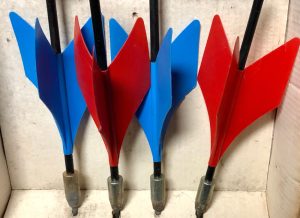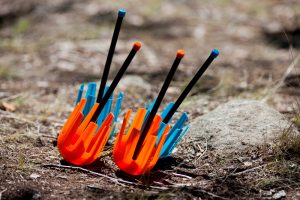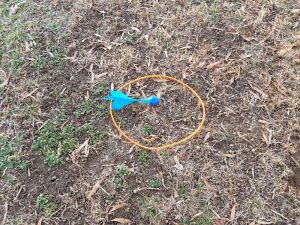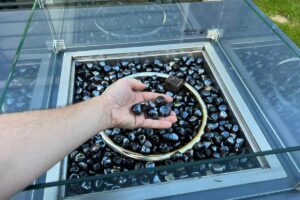Today, every farm owner dreams of having a pond on the farm.
Just imagine some clear water in the middle of your farm.
Lush green grass around it, some trees nearby, animals running around the pond, and, if you want, some fish swimming in the water.
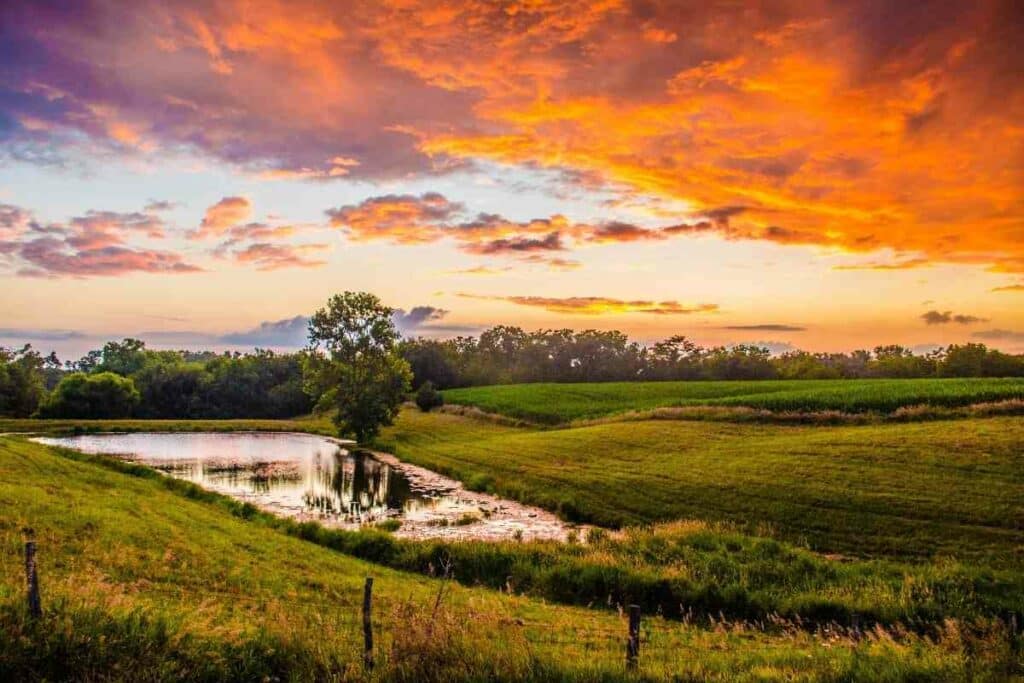
To have a lovely farm pond, you will need to do more than just dig a hole. You do not just wait for the water to get into your pond.
There are a lot of steps to take to make your pond successful and last you throughout the year.
What to Expect? This guide to farm ponds will help you learn more about farm ponds. You can start by understanding what a farm pond is and the various types you can choose for your ranch or farm.
What Is A Farm Pond?
A farm pond is a small reservoir or tank-like construction.
Usually, you can build them to create a water catchment area or store your surface runoff water.
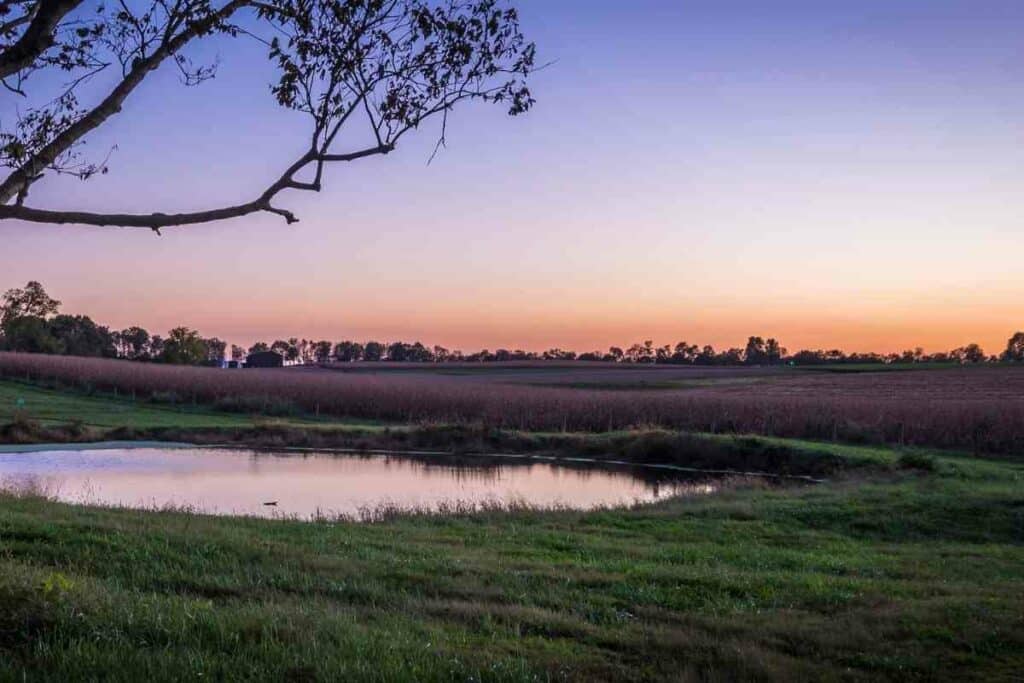
These water harvesting structures provide water for livestock, and you can also use them for irrigation.
If you are huge on aquaculture, then a farm pond is the way to go.
These farm ponds also play a significant role in controlling floods and fires and protecting against the elements.
You can use a farm pond to hold water during the rainy season, which you can use during the drier season to water your plants.
Types Of Farm Ponds
Generally, there are two categories of farm ponds.
These are dependent on the condition of the land and the source of water.
1. Depending on the topography of the land
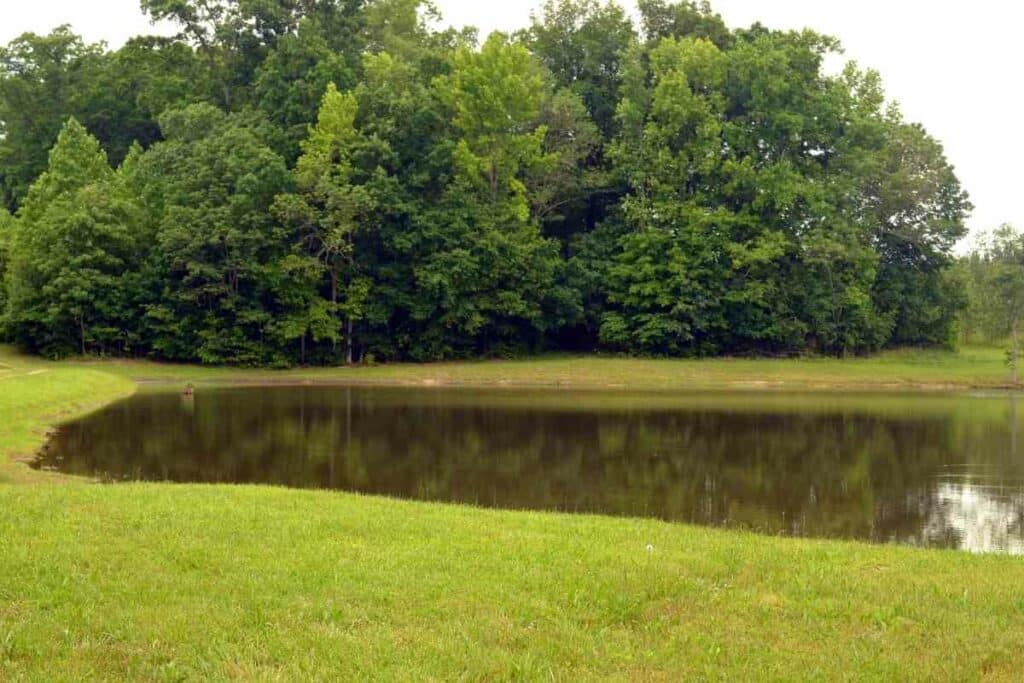
Depending on the pond’s location, they can either be embankment ponds or excavated ponds.
Embankment ponds
These are the types of ponds you would build across a water stream.
These ponds are common in slopy areas, where the water flows naturally into the pond. It could be a gentle or steep slope.
Moreover, these types of bonds have fixed dimensions based on the volume you want to catch.
Also, you can find a region with depressed land.
This technique is common for people who want to do minimal earthwork when constructing their farm ponds.
Excavated/Dug out ponds
On the other hand, excavated earth ponds are common in flat areas.
Usually, you have to dig deep to create the desired capacity of your pond.
If you want a small water supply, this is the pond for you.
2. Depending on the source of water
Depending on where your pond will be sourcing water from, there are two types of ponds.
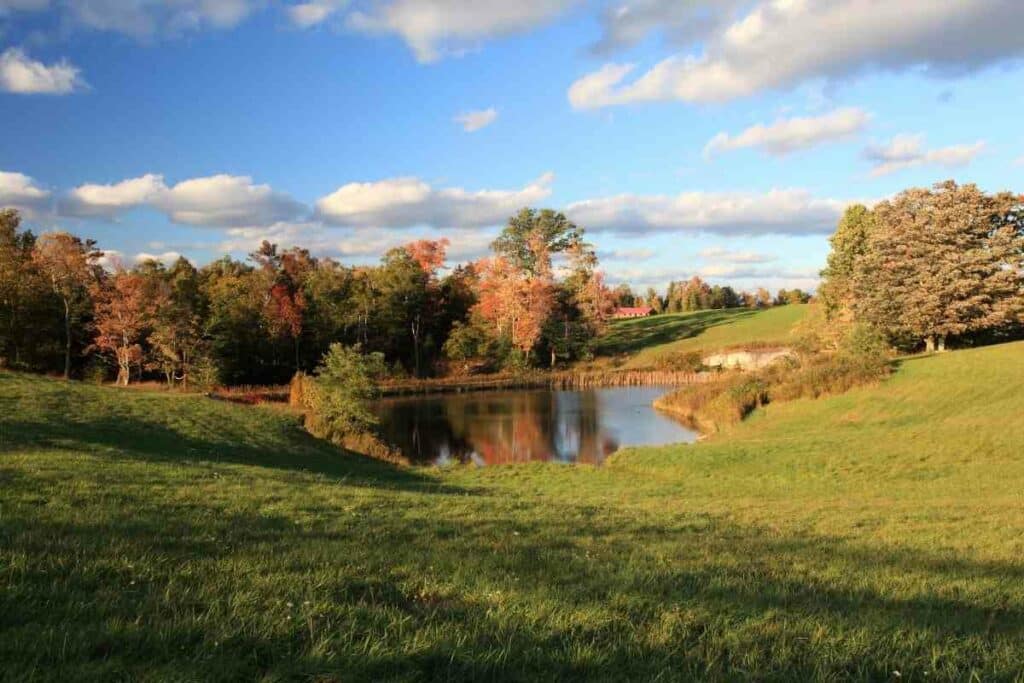
These are spring or off-stream storage ponds.
Spring ponds
If you live in the hilly regions of the country, where water springs from the ground, then this is the pond you should have on your farm.
The pond will draw its water from the natural creeks, hence the name.
Off-stream storage ponds
These ponds are common in regions with seasonal streams.
So, when the stream is flowing, the pond stores water, and when the water dries up, the pond becomes your water source.
These ponds have a channel that safely directs water to them from the river.
Where Do You Get Water For Your Farm Pond?
Not all ponds source their water from the rains or the stream.
There are several water sources you can use to fill your pond.
Ground Water
Ponds can draw water from underground sources.
Usually, this is common in low-lying areas, where the water table is relatively high.

However, on their own, these sources are not sufficient to keep your pond full the entire time.
Regardless of their scarcity and dependence on the soil seepage, the underground water contributes significantly to ponds that depend on surface runoff water.
Springs
Springs occur when the underground water is under pressure and has enough volume to maintain continuous flow above ground.
Usually, the water is clean and very clear, making it an ideal water source for your farm pond.
Streams
It is tough to get the authorization to block a whole stream for your pond.
Instead, you can build a diversion to help fill your pond.
Wells
Here, you will need an electric pump.
So, you draw the water from your well and pump it into your farm pond.
Wells are a useful water source for your pond during the dry season when the streams are not running, and there are no rains to fill up your pond.
Surface runoffs
In some cases, if you want a small pond, you can trap surface runoff water that comes with the rains.
Alternatively, you could wait for the snow to melt and fill your pond. However, this might make your pond seasonal.
How Do You Build A Farm Pond?

The design and construction of farm ponds take a lot more than digging a hole and filling it with water.
You need knowledge of the site conditions and requirements.
Some places are naturally suited for farm ponds, while others are not.
Disclaimer: Before you jump right into the construction of your farm pond, it is crucial to remember: If you are going to disrupt the water flow in your local stream, you need permission from the relevant authorities. Before you can alter any pre-existing water on your land, you should contact the environmental authorities.
Now, if you have the green light to proceed, here is how you can construct a farm pond.
Step 1: Choose a design for your pond
Having a proper design for your pond determines where you will build it, the size, and the depth of the pond.
Since the most common pond is an excavated pond, below is a general approach to its design.
Collect Data
Collect accurate data on your farm’s topography, rainfall, temperatures, evaporation, etc.
You can ask the local natural resources conservation service for the information.
Also, be sure of the type of livestock using the pond.
Estimate your capacity
Depending on the number of livestock using the farm pond, you can estimate the capacity of your pond.
Horses and cattle will require a bigger pond than smaller animals like hogs and sheep.
Also, while designing your pond’s capacity, add an extra 10% to accommodate the evaporation.
Choose your water source
If you need to find nearby streams or the water table level in your region, topographic maps will help.
Choose your pond’s depth
To be discussed in a few seconds.
Select the best site for the pond
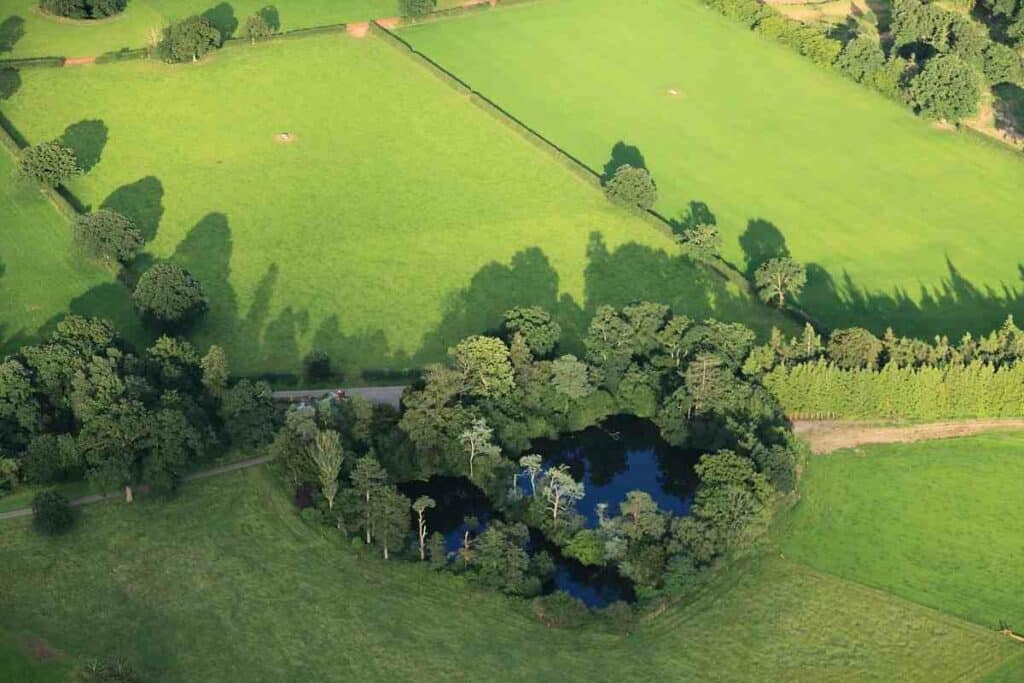
Usually, building a pond in the slope direction makes it easier to choose.
You can find out all about the topography of your farm from aerial photographs or a map.
The site should be easily accessible; preferably somewhere you do not need to remove trees.
The site should have a good foundation, minimal seepage, and be close to a natural waterway if you ever need to spill excess water or during emergencies.
Determine your soil composition
A preferrable site will be somewhere with high clay-soil content.
How does your topography affect your pond?
The topography of your land is crucial during pond design.
It affects the shape and depth of the pond if you are doing an excavated pond or the dam’s size if you are going with the embankment type.
The slope of the land affects the speed/intensity of the runoff water, affecting the simplicity/complexity of your pond.
When building a farm pond, you will come across tips that recommend building the structure in an area that will require minimal excavation.
However, shallower and wider ponds suffer more evaporation losses than deeper ones.
Besides, with a good slope, you may not need an excavation. A simple U-shaped bund at the lower side will create a barrier to hold the water.
How deep are farm ponds?
When determining the dimensions of your farm pond, you should ensure that the depth can accommodate your intended capacity.
The depth should include the additional depth for any sedimentation.
Also, you should include some depth to hold the water that you anticipate losing through seepage.
The soil depth plays a crucial role in your farm pond.
The deeper it is, the longer it can hold the harvested water. This is because deep soils reduce evaporation losses.
So, when you are digging a farm pond, depths of about 2.5m are ideal.
That depth can hold adequate volumes for the farm, keep the evaporation at a minimum, and you can dig that far without needing extra equipment.
Step 2: Dig your pond
You have the hard part behind you once you have a site in mind.
You can proceed to dig your pond. You will also have the results from your land
Include an emergency spillway to drain excess water from the pond.
This spillway will be at the point of maximum depth, and it will serve as a controlled outlet from your farm pond.
The dimensions of the spillway will depend on the runoff water.
You can determine the dimensions of your spillway using Weir Formula:m
Where:
- Q– anticipated discharge rate in m3/s
- C-coefficient of discharge, which depends on the type of Weir (rectangular, triangular, or trapezoidal)
- H– head the crest
- L-Length of crest
- m-exponent, which depends on the shape of the Weir’s opening
The spillway would be unregulated or mechanically controlled, especially for an embarkment pond.
This way, you can protect your farm pond from crumbling due to the high water pressures caused by unexpected inflows.
When making a spillway, add some plants and vegetation along its path. These come in handy in preventing scouring.
Controlling seepage
When choosing a location for your pond, you do a soil test to determine its composition.
The goal of the test is to determine if your land has enough clay in it.
You can estimate the clay content in your soil through the following steps:
- Collect soil samples from holes you dig near the pond site (make sure you get soil below the topsoil)
- Mix the soil samples in a mason jar ( a handful of each sample is enough)
- Fill the mason jar with water
- Shake the mixture vigorously for a minute
- Place the jar on a table, where you can leave it undisturbed for 24 hours
- Analyze the soil layers ( sand sinks to the bottom, followed by silt particles in the middle and clay on top of silt)
- Measure the thickness of each layer using a ruler
- Calculate their relative percentages (your soil should have about 70% sand, at least 20% clay content, and 10% silt for your pond to work)
Now, seepage losses will depend on your soil composition.
More sand means more water seeps through the soil. So, to control the seepage, you can try digging about 30cm of soil and recompacting it.
Although the seepage losses will be significant initially, they will eventually decrease because of the finer particles deposited at the bottom of the pond by surface runoff water.
But do not worry.
If your soil lacks the minimum recommended clay content, you can order some soil from professional landscaping companies.
Alternatively – You can use swelling clay materials like bentonite. When mixing the soil and bentonite, you should include some sand for support.
Also, you can use a polythene sheet as your pond lining material. You just line the sheets at the bottom of the pond and join them using a hot ironing box.
After placing the polythene sheets, you should add some soil (about 15cm thick) to keep the sheets in place for when you fill the pond with water.
Step 3: Fill your pond
This is when you create your little microclimate.
You can fill the pond with aquatic animals, plants, algae, etc.
If you want to rear fish, you should find some lining material that is animal and plant-friendly.
How Do Fish Get Into A Farm Pond?
If you are going with aquaculture, you will fish in your farm pond.
Now, you can choose the fish to populate your ecosystem, depending on the size of your pond. Remember, different fish require different conditions to thrive.
Some fish, like bass, tend to be predatory.
So, when you fill your pond with some bass, you can add some extra bluegills to be the food for the bass.
So, how do you get fish into your fish pond?
If you have an embankment type of pond, fish that live in the river can easily find their way into your pond.
However, if you have an excavated pond, you will have to buy some fish.
A licensed commercial fish hatchery near you would be the best place to start.
DISCLAIMER: Do not source your fish from the local stream and segregate them from their habitat. Remember, you may be lining your pond with some polythene, which would cut off breeding grounds for some fish like catfish. Some fish also need rocks or plants to hide in, which you may not include in your pond.
Populating your pond at the right time will increase its survival rate and adaptability to the new environment.
Usually, spring or fall are the best seasons to stock your farm pond with fish.
Proper Maintenance Of Your Farm Pond
Proper maintenance and protection go a long way in keeping your pond functional for a long time.
You can keep your pond safe from an overflow of sediment by planting vegetation around it.
When maintaining your pool, you want to look at the major damaging points:
Erosion
The exposed surface along the pond and spillways are severely affected by soil erosion.
A good cover of sod-forming grass will be an excellent cover.
Wave action
If you have an embankment-type farm pond, you want to keep your dam walls secure against any wave action.
Berms are an excellent choice. However, you can add protection to the berm using vegetation cover.
Alternatively, you can use a boom with one or two rows of logs to protect against wave actions.
Be sure to chain and anchor the boom at the bottom of the dam. Finally, frame the log to move as a single unit.
Another alternative to protecting against wave action would be to use ripraps laid from the top to the bottom of the dam in the upstream direction.
Conclusion
Creating a farm pond takes more than digging a hole and filling it with water. You need to have a design in mind.
You must also know the weather patterns in your area and the best location to set up.
If you are new to building farm ponds, you can consult with a professional landscaper or research your site.
